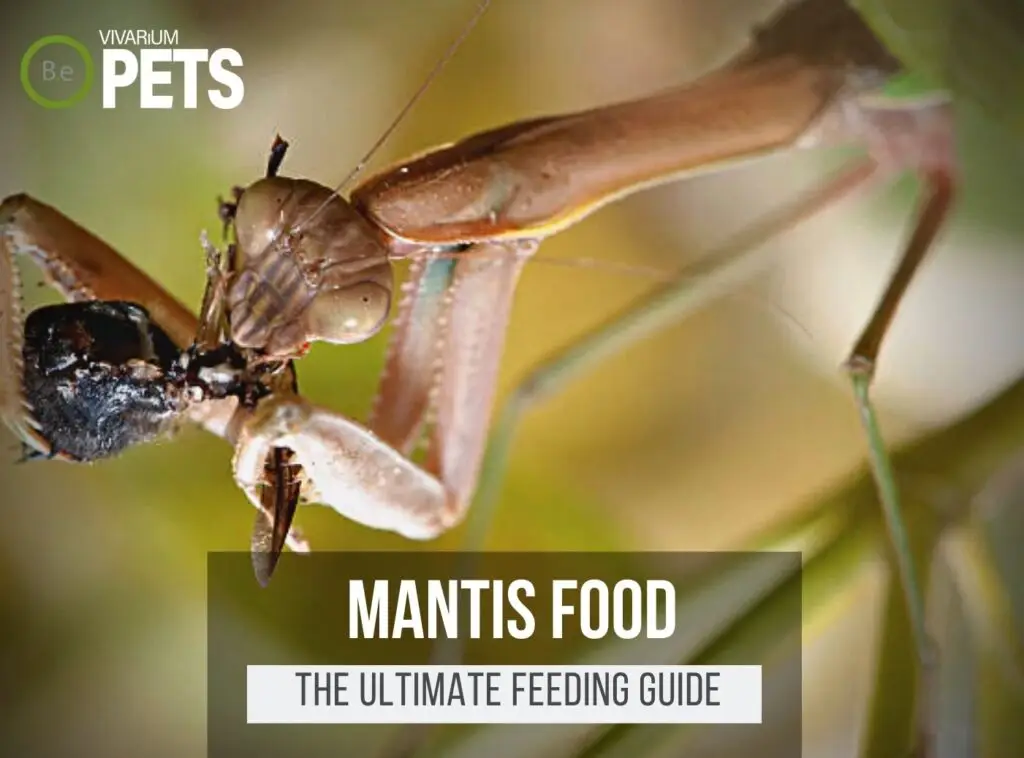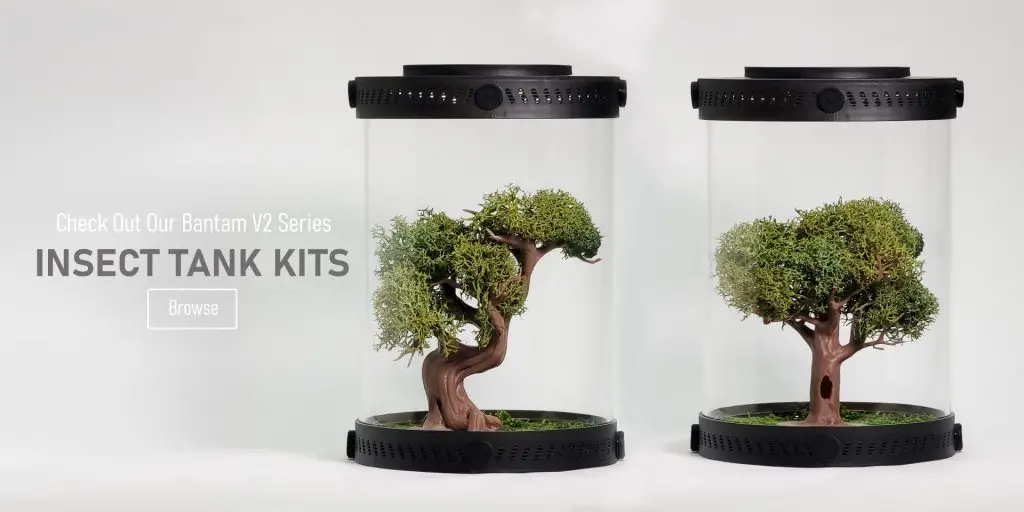Do you want to own a Cryptic Mantis? This captivating species of praying mantis is sure to provide you with hours of fun!
But before you bring your mantis home, you should learn about the essential steps for giving proper care to your mysterious new friend.
This Sibylla pretiosa guide will show you the basics of setting up an ideal enclosure, creating the perfect environment, feeding & drinking rituals, preventing & treating illnesses, and tips for breeding & taking breaks.
Get your obscure mantis settled in its new home with this informative cryptic praying mantis care guide!
| Characteristics: | |
|---|---|
| Common Name | Cryptic Mantis |
| Family Name | Sibyllidae |
| Scientific Name | Sibylla pretiosa |
| Use | Pets |
| Temperament | Non-aggressive |
| Lifespan | Up to 9 Months |
| Diet | Insectivore |
| Adult Size | 5 to 6 cm |
| Breeding Type | Egg Layer |
| Care Level | Moderate |
| Minimum Tank Size | 1 to 5 Gallons |
| pH | 7.0-8.0 |
| Hardness | Moderate |
| Temperature | 62-82°F |
Table Of Contents:
ToggleWhat Are Cryptic Mantis?
Sibylla pretiosa is a species of praying mantis which belongs to the Sibyllidae family.
This species of mantis is often simply referred to as the ‘Cryptic Mantis.’
The Cryptic Mantis derives its name from its unusual, mix-matched camouflage which helps them blend into their habitats and often go unnoticed until threatened.
It is native to Central and South Africa, giving it a unique, exotic look.
With its blend of color patterns, this species is one of the most beautiful and mysterious of the praying mantis family.
What Does a Cryptic Mantis Look Like?
Sibylla pretiosa is a small yet striking insect that usually measures between 5 to 6 cm long with the females generally being slightly larger than the males.
Its coloration is a grey-to-brown pattern, with a blend of darker grey patches that cover the head and the thorax.
Its wings, which come out of the mid-segment of its thorax, are most often a dark grey.
The Cryptic Mantis has bright-colored eyes, which are set far apart and bulging out of its head.
Its antennae are long and thin, with a slightly darker color than its head.
Its legs are slender and thin, taking on a beige-to-pale orange hue.
Its abdomen features a series of tiny spines, giving it a more menacing look.
Benefits Of Using Cryptic Mantis
Cryptic Mantis can make a great addition to a variety of vivariums, from forests to deserts, tundras, and more.
Not only do they provide liveliness and vibrancy, but they also serve the useful purpose of keeping the population of pest insects lower.
They are also relatively easy to care for and maintain with proper knowledge.
Ethically breeding and caring for the mantis can be a fun and rewarding experience and can provide lots of interactive enjoyment.

Cryptic Mantis Facts
The Cryptic Mantis is an interesting species of praying mantis found throughout the world.
They have a calm temperament and typically live for almost one year.
In the wild, they feed on mostly small flying insects, but they can be offered plant-based options when kept in captivity.
Breeding is possible but relatively difficult, and should only be attempted by experienced bug keepers.
Habitat
These fascinating insects have a wide range of natural habitats, mainly spanning parts of Southern Africa.
In this country, Cryptic Mantis can be found in deciduous forests and grasslands, where they inhabit tall shrubs found in well-lit areas.
Occasionally, they have also been spotted in wooded forests and other green habitats.
Sibylla pretiosa blends in very well with their environment thanks to their unique body color, which helps them stay camouflaged in their surroundings.
They are diurnal, meaning they spend their days searching for food and bashing prey with their raptorial forearms.
Create the perfect home for your mantis with our Customizable Mantis Enclosure Kits, designed to meet all their habitat needs.
Diet
Cryptic Mantis diet in their natural habitat consists of mainly insects, spiders, and other invertebrates.
The mantis hunts for its prey by resting on a leaf or twig and relying on its cryptic camouflage and patience.
Sibylla pretiosa will then slowly stalk its chosen prey and strike with lightning speed when it least expects it.
They are also adept flyers and will often hunt for prey in the air, typically small flying insects.
Temperament
The Cryptic Mantis is a passive species of praying mantis, so it rarely postures in a threatening way or acts aggressively.
Without proper handling, however, this species of mantis can be skittish.
When Sibylla pretiosa perceives a threat, it may hold up its front legs in a defensive stance and hiss as a warning.
When handled gently and regularly, the praying mantis will eventually learn to tolerate and even enjoy human interaction.
Avoid housing a Cryptic Mantis with any larger insects as they may see it as potential food.
This species of mantis will not do well in an ecosystem with other larger animals, as the introduction of predators will cause extreme stress and could even lead to death.
Lifespan
Sibylla pretiosa has an expected lifespan of up to 9 months.
They go through several stages during their life cycle, beginning with the egg stage.
The eggs of this species hatch into an instar nymph (a larval stage) and go through 5-7 instar stages over the next 2-3 weeks.
The Cryptic Mantis begins to gain adult characteristics around the 4th-5th instar stages and will mature into adulthood over a few weeks.
Once S. pretiosa becomes an adult, the individual will live for several more months with proper care and diet.
During this time, the Cryptic Mantis may reproduce and begin a new cycle of life.
Breeding
Cryptic Mantis reproduce by a process called sexual reproduction.
In their species, the female mantis lays eggs, usually in an ovum, as a way of reproducing.
The male mantis will then produce a spermatophore, which is a sperm package, that will then fertilize the female’s eggs.
The female will then deposit the fertilized ova into an oviposition which is a sack or egg case.
Once the eggs are deposited, the female will then cover them with a gelatinous glue that will protect them from weather, predators, and parasites throughout the development of the mantis.
Generally, after seven to eight weeks, the eggs will hatch, although some species may take more or less time to develop.
After the eggs hatch, the young mantises, called nymphs, will then emerge and will be extremely tiny.
The nymph will then go through a series of instars where they will molt and increase in size as they grow and become adults.
At adulthood, the mantis will then be ready to mate and reproduce.
Where To Find Cryptic Mantis
Finding Sibylla pretiosa in the wild can be difficult, as the species is not found throughout the entire world.
If you are in a location where the mantis is native, you may be able to find the species in its natural habitat.
When searching, you should look for them in wooded areas such as forests, fields, and meadows.
Alternatively, you can buy Cryptic Mantis from a certified insect breeder.
These breeders will raise the species in an optimal environment and can guarantee the age, gender, and health of the mantis.
Be sure to research potential suppliers and read customer reviews before making a purchase.
Cryptic Mantis Care
Sibylla pretiosa care involves setting up the right enclosure, providing the right environment, feeding & hydrating, avoiding insecticides & toxins, preventing & treating illnesses, and properly breeding & taking breaks.
With the right knowledge and care, you can provide a secure home and the best possible care for your Cryptic Mantis!
Tank Requirements
When considering the best setup for S. pretiosa, the ideal vivarium should be medium-sized (1-5 gallons) with mesh or ample air holes.
The tank should have a low to moderate humidity level (50-70%), a well-ventilated lid, and be free from drafts and intense sunlight.
For substrate, use coco coir, peat moss, or bark with a depth of 1-3 inches.
The tank should also have a pH balance between 5.5 and 8.0, with the best range being neutral (7.0) to slightly alkaline (8.0).
Additionally, the water hardness should be between 5-13 dKH, and the temperature should be kept between 62-82°F to stimulate the desired behavior of your Cryptic Mantis.
Lastly, it’s important to provide some climbing fixtures and terrarium lighting that mimics day and night cycles.
Applying these strategies ensures your precious praying mantis is happy and well-suited in its new home.
What Does Cryptic Mantis Eat?
Feeding Sibylla pretiosa is essential for its health and well-being.
Here are some tips for feeding your Cryptic Mantis:
- Provide a variety of live insects for your mantis to feed on. Offering variety gives them different sources of protein. Some insects that you can offer are crickets, fruit flies, butterworms, waxworms, and silkworms.
- To ensure your mantis can catch the food, make sure the insects are not larger than its body. This way, they cannot escape!
- Supplement nutrition for your Cryptic Mantis by placing an abundance of leaves and twigs in its enclosure. These will give your pet mantis the nutrients it needs.
- Make sure to remove any uneaten food after 24 hours. This helps keep the enclosure clean.
- Feed your mantis every 5 days, depending on its size.
If you’re looking for a more detailed approach to feeding these critters, be sure to check out my ultimate DIY Praying Mantis food guide. I give a more in-depth explanation of the best foods and my favorite recipe.
Best Tankmates For Cryptic Mantis
When it comes to choosing the best tankmates for a Cryptic Mantis, you should be aware of a few things.
If you plan on keeping live food for your mantis, it’s important to choose insects, arachnids, or reptile tankmates that are native to the same climate and have similar dietary preferences.
In terms of other beneficial tankmates, there are a few species that can be kept alongside Sibylla pretiosa with positive consequences.
Several other animals such as crickets, grasshoppers, houseflies, earthworms, and even small newts may form symbiotic relationships with the cryptid mantis and provide excellent tankmates.
These animals typically have similar living requirements as the mantis, similar prey preferences, and are not large enough to prey on the mantis itself.
When considering potential tankmates, always think about the type of living environment and the size of S. pretiosa before making your final decision.
Conclusion
In conclusion, following the essential steps for adequate Sibylla pretiosa care will help ensure your new pet thrives and gives you years of enjoyment.
With the right enclosure, environment, feeding & drinking rituals, prevention & treatment plans, and proper breeding & breaks, you can give your mantis the necessary care it needs to live a happy and healthy life.
So, get ready to explore the fascinating world of Cryptic Mantises and learn how to give them their best care today!
Create the ideal habitat for your praying mantis with our species-specific soil mixes and Insect Enclosure Kits. These products provide everything you need for a thriving Mantid habitat.
Frequently Asked Questions
The size of a Cryptic Mantis (Sibylla pretiosa) is approximately 1.2-2.5 inches long.
Cryptic Mantis (Sibylla pretiosa) primarily feed on small insects, such as flies and moths.
To successfully breed the Cryptic Mantis (Sibylla pretiosa), create an environment with high humidity. Put a female and male together in the enclosure over the course of several days. Make sure to provide a suitable diet and temperature in order to encourage mating.
The typical lifespan of a Cryptic Mantis (Sibylla pretiosa) is 8-12 months.



